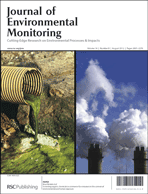 Andrew Meharg, University of Aberdeen, and colleagues from Universidad Miguel Hernández have investigated a number of essential and toxic trace elements present in baby foods, looking particularly at the diet of infants with celiac disease. Although research into trace element availability has been undertaken before, most focus on only a few essential elements such as zinc and iron, and none have specially investigated the foods designed for infants suffering from celiac disease.
Andrew Meharg, University of Aberdeen, and colleagues from Universidad Miguel Hernández have investigated a number of essential and toxic trace elements present in baby foods, looking particularly at the diet of infants with celiac disease. Although research into trace element availability has been undertaken before, most focus on only a few essential elements such as zinc and iron, and none have specially investigated the foods designed for infants suffering from celiac disease.
Meharg et al. examined gluten-free rice-based baby foods, baby cereals with gluten and puréed baby foods from Spain and compared these with baby foods produced in the US, UK and China for essential (Ca, Na, Fe, Cu, Mn, Zn, Se, Cr, Ni and Co) and non-essential (As, Pb, Cd and Hg) elements. They found that baby cereals (which contain gluten) were richer in Ca, Fe, Cu, Mn, Zn, Cr and Ni than the gluten-free baby rice options and in line with other recent studies, they found that the content of As in rice-based foods was elevated. The researchers also discuss the fortification of different baby foods with trace essential elements in line with WHO recommendaitons.
Read the full article here:
Essential and toxic elements in infant foods from Spain, UK, China and USA
Ángel A. Carbonell-Barrachina, Amanda Ramírez-Gandolfo, Xiangchun Wu, Gareth J. Norton, Francisco Burló, Claire Deacon and Andrew A. Meharg
DOI: 10.1039/C2EM30379E



















